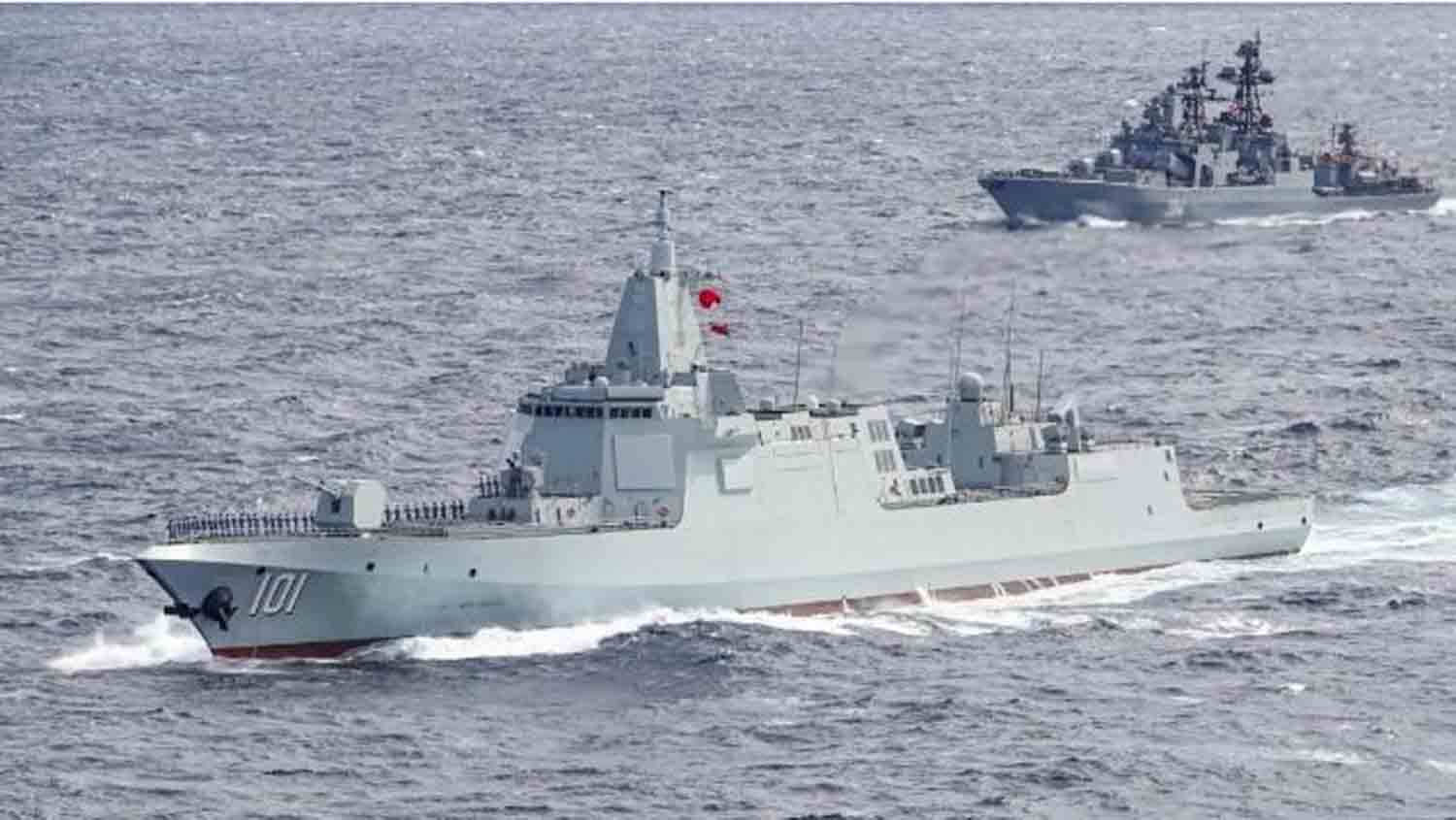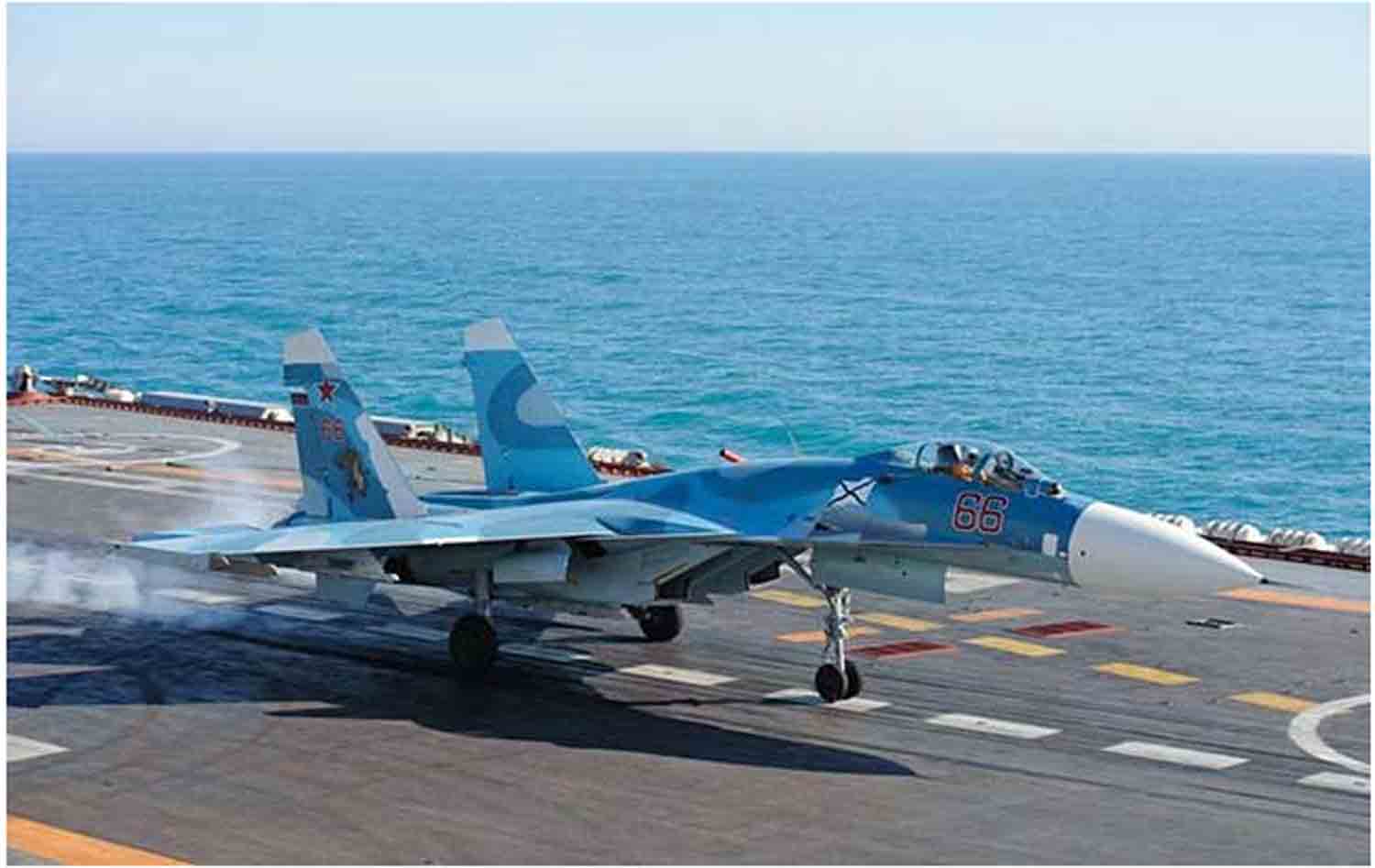In a high-stakes naval exercise, a Chinese Type 055 destroyer, accompanied by two unmanned drone boats, confronted eight of the United States‘ most powerful Arleigh Burke-class destroyers. The result was a technological demonstration that has the potential to transform naval combat.
This simulation, orchestrated by the China Ship Development and Design Centre in collaboration with Huazhong University of Science and Technology, was far from a mere theoretical exercise. The Type 055, often hailed as the most advanced surface warship globally, deployed its fleet of drones in a strategic attempt to incapacitate the U.S. Navy’s esteemed Arleigh Burke destroyers.
The engagement featured 32 drones and 14 unmanned vessels launching an offensive, while the American destroyers responded with 32 Tomahawk and LRASM missiles, each valued at over $3 million.
The surprising outcome? Despite facing a significant missile onslaught, the Type 055 and its drones not only endured the attack but also launched a counteroffensive with sufficient firepower to keep the U.S. fleet vigilant.
This simulation highlights more than just technological advancements; it signals a shift in naval warfare dynamics, where unmanned systems create a lethal “kill web,” allowing smaller, cost-efficient vessels to challenge larger destroyers effectively.
The exercise, occurring shortly after reports of intense electronic warfare between the U.S. and China in the Spratlys, emphasizes a concerning trend: the widening disparity in naval capabilities between the two nations.
As the U.S. Navy grapples with outdated fleets and insufficient technology, China’s Type 055, equipped with advanced missiles and unparalleled sensors, stands out as a formidable force that could alter the dynamics of future conflicts.
The pressing question is not whether China’s naval capabilities will shift the balance of power, but rather how swiftly the West will respond to maintain its competitive edge. This scenario serves as a stark reminder: China is not merely keeping pace; it is advancing.
The Chinese Type 055 and the U.S. Arleigh Burke-class destroyers are both modern, highly capable warships, epitomizing the forefront of technology and strategic foresight within their respective navies. Their significance extends beyond military might; they possess technological advancements that could redefine naval warfare in the 21st century.
The encounter between these two maritime titans transcends a simple battle of ships; it represents a fundamental clash of ideologies regarding the future of naval combat. The Type 055 and the Arleigh Burke, each with distinct advantages and vulnerabilities, are not just components of their fleets—they embody broader strategies, aspirations, and the evolving landscape of global military relations.
The Type 055 is not merely a destroyer; it is an imposing vessel, measuring 180 meters in length and displacing approximately 13,000 tons, categorizing it alongside heavy cruisers.
Crafted to embody both elegance and formidable military prowess, this vessel stands as a testament to China’s emergence as a significant global military force and plays a pivotal role in its strategy for maritime dominance.
Equipped with an array of advanced missile systems and combat technologies, including highly effective vertical launch systems, it boasts remarkable long-range strike capabilities alongside air defense systems that pose a significant challenge to any adversarial fleet.
With its sophisticated drones and extensive missile arsenal, this ship not only engages in contemporary naval confrontations but also reimagines the nature of future conflicts at sea.
However, the Type 055’s intimidation factor extends beyond its arsenal and technological advancements. Its true strength lies in the synergy of its weaponry and systems. Designed to function as a command hub, the Type 055 can lead naval fleets and seamlessly integrate its onboard systems for coordinated offensive operations.
By deploying drone boats or orchestrating missile barrages from a secure distance, it transforms into a formidable entity, not solely due to its armament but also because of its capacity to execute intricate maneuvers in fluid combat scenarios. This vessel transcends the traditional definition of a ship; it is a versatile combat platform that poses a significant threat to any adversary.
Conversely, the U.S. Arleigh Burke-class destroyer is equally formidable, yet it embodies an entirely different philosophy regarding modern naval engagement.
Initially developed in the late 1980s, the Arleigh Burke was conceived as a vessel with strategic objectives during the Cold War era. Over the years, it has received extensive upgrades, evolving into a fundamental asset of the U.S. Navy.
Primarily recognized for its missile capabilities, the Arleigh Burke is equipped to perform both air defense and anti-missile operations. It features vertical launch systems that enable the deployment of a diverse range of missiles, including Tomahawk, Standard, and LRASM, while also employing advanced targeting and anti-missile technologies for self-defense.
These destroyers are somewhat smaller than the Type 055, with a displacement of approximately 9,000 tons, which enhances their mobility but limits their munitions and weaponry capacity in comparison to the Chinese vessel.
However, the U.S. Navy emphasizes the ship’s technological integration and its ability to maintain robust connectivity among vessels in a combat formation, rather than merely its size.
Equipped with sophisticated sensors and radar systems, the Arleigh Burke excels in achieving informational superiority on the battlefield while effectively defending against various threats.
While the Type 055 boasts modern features and innovations, the Arleigh Burke is designed to perform exceptionally across a range of missions. Its extensive history of combat and operational success further attests to its capabilities in various global conflicts.
The Type 055 poses a challenge with its advancements in technology and the incorporation of drone platforms, yet the Arleigh Burke continues to excel within its class, particularly in mobility, defense capabilities, and the variety of missions it can undertake.
When viewed in a broader context, the comparison between the Type 055 and the Arleigh Burke transcends a simple rivalry between two destroyers. It represents a fundamental divergence in visions for the future of naval warfare. China is focused on technological advancements and innovative operational strategies, while the United States draws upon its extensive, time-tested experience.
China’s proficiency in utilizing autonomous systems and integrating drone technology into its military operations raises significant questions about the U.S. approach to naval engagements. These vessels symbolize not just competition in the field, but also two contrasting philosophies regarding the evolution of naval warfare.
Discover more from Defence Talks | Defense News Hub, Military Updates, Security Insights
Subscribe to get the latest posts sent to your email.





